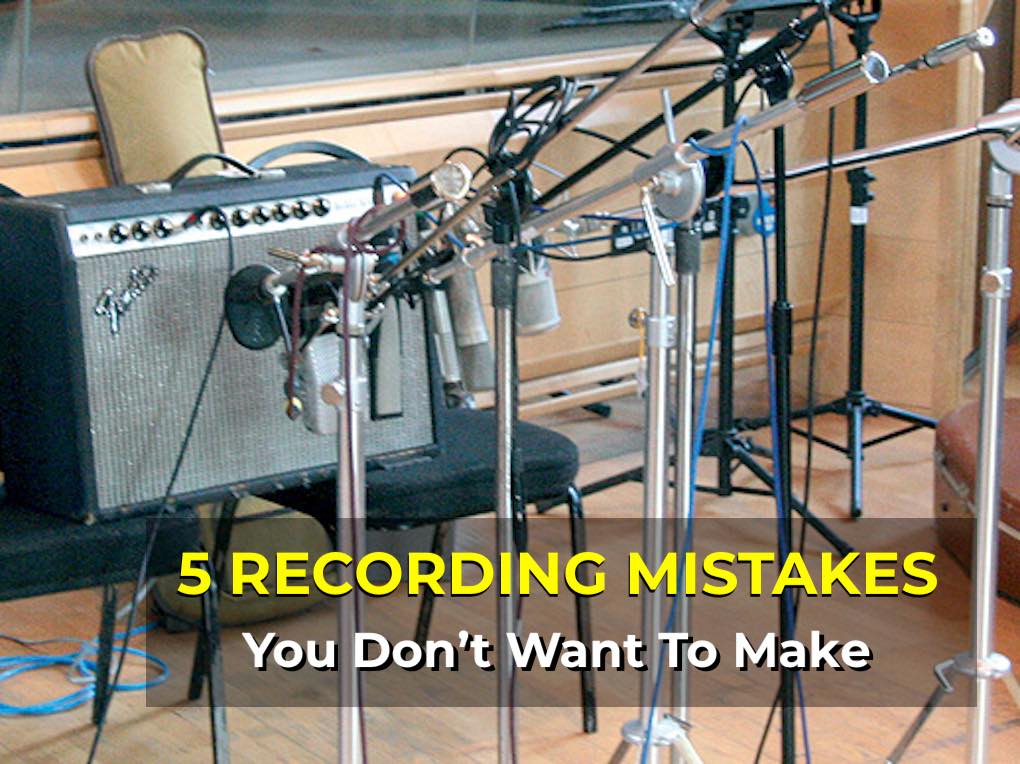- in Recording by Bobby Owsinski
The 5 Recording Mistakes You Don’t Want To Make
When it comes to recording, many songwriters and musicians with home studios will often throw up a mic and begin to record as soon as a signal shows up on the DAW track. That’s a great way to get your inspiration recorded without losing the idea, but unless you get lucky, it’s not the best path to a great recording. The problem is that the quick and easy method can become a habit, which ultimately results in a mix that’s difficult to work with because the sounds aren’t as good as they could and should have been. These 5 recording mistakes are often the culprits in a less-than-stellar sounding final product.

1 – Using the wrong microphone – Try to match the microphone to the sound source. In other words, a bright sound source pairs well with a mellow sounding mic. Likewise, a brighter mic works well on a dull-sounding sound source. Remember, your best or most expensive mic might not be the right match for the instrument. Use your ears.
2 – Not considering the placement – Great engineers care a lot about microphone placement and will experiment with different positions instead of automatically reaching for an equalizer to change the sound. It’s surprising the difference an inch can make sometimes. It helps to have an assistant to move the mic while you listen, but a good set of headphones can work as well.
3 – Not considering the sound of the room – The room sound contributes a great deal to the final sound of the recording. Where the instrument is placed in the room, coupled with the distance of the mic from the sound source, can be critical to your final recorded product. Make sure that the sound of the room, especially if there are a lot of reflections, fits with the other instruments in your mix.
4 – Not thinking about phase – In a multi-microphone situation, acoustic phase is another factor that can have a bearing on your recording. Again this comes down to microphone placement, but the complexity is increased because there are several mics to consider, as well as their directionality. Use your ears to help you find that magic spot.
5 – Not setting the right record levels – Back in the analog days there was a need for hot levels since the louder the signal, the less tape noise you’d hear. In the early days of 8 and 16 bit digital, you’d get more dynamic range by aiming for a hotter level to “fill up the bits.” Today’s 24 and 32 bit recording no longer requires these signal level extremes. Aim for a level of -10dBFS with peaks to -6dBFS, although there’s no penalty for recording at much lower levels as well.
These 5 recording mistakes are easy to fix and don’t take up that much time in the end. Just listen a little harder, and you’ll be glad you did.

